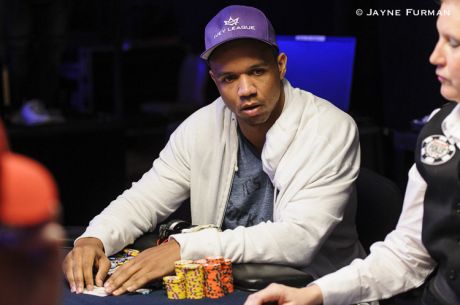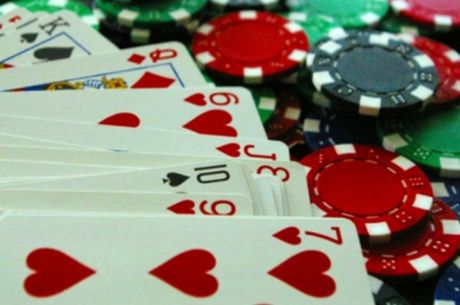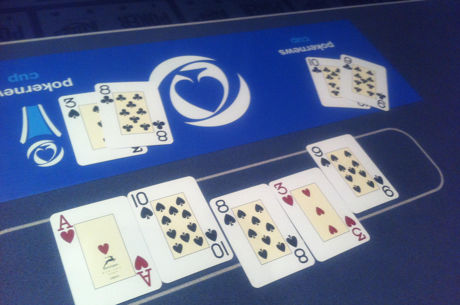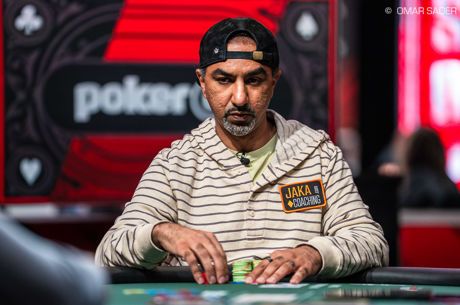Pumping Up the Variance Against Better-Skilled Opponents
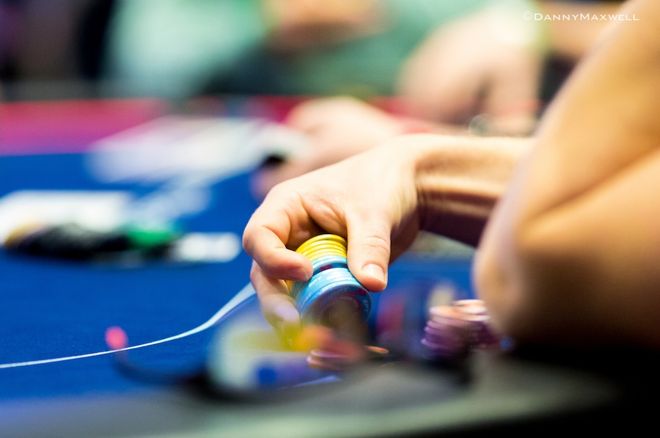
It��s a common observation in poker that thanks to the game��s chance component, better-skilled players might reasonably expect to win over the long term �� say, over hundreds of sessions or tournaments �� but cannot anticipate always doing so when the sample size is smaller.
Tournament poker often highlights this truth. We might scan a 1,000-player field starting a World Series of Poker or European Poker Tour event and spot 100 of the best tournament players participating in it. From that group you and I could each pick 10 favorites to go deep, perhaps having a little ��last longer�� bet between us. Depending on our knowledge of the players, we might even each manage to pick one who makes the final table.
We wouldn��t reasonably expect to do much better than that, though, with our selections. We��d try to pick the best players, sure, but the sample size �� just one tournament �� is simply too small to minimize the game��s luck component enough to assure skill will win out.
Favorites and Underdogs
Today the National Collegiate Athletic Association Men��s Basketball Tournament begins in earnest, with the four play-in games having been completed and 64 teams remaining to play a six-round, single-elimination tournament to decide who will be this year��s NCAA champion. Over the last couple of days (and perhaps this morning, too), many of us have been filling out brackets hoping to guess as many winners as we can out of the 63 games in an effort to win our pools.
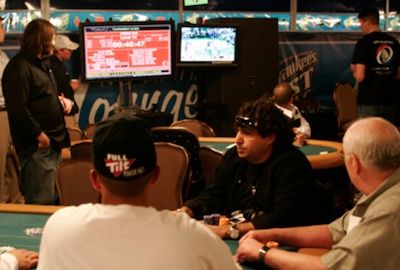
As with our hypothetical last-longer bet at the start of a poker tournament, those of us filling out brackets are also facing the challenge presented by a small sample size, as are the teams themselves who have to play one do-or-die game after another.
The NCAA seeds teams to give an idea who is the ��favorite�� and who is the ��underdog�� in each matchup, and even though there��s a lot of debate over how accurately the seedings reflect teams�� relative skill they do help highlight the variance that can come with single-game samples.
Looking back over the last five years of NCAA men��s basketball tournaments and starting with the round of 64, here are the number of times lower-seeded teams won games (here called ��upsets�� even though that isn��t always the case):
| Year | 1st-round upsets (out of 32) | Subsequent upsets (out of 31) | Total upsets | % upsets |
|---|---|---|---|---|
| 2015 | 5 | 6 | 11 | 17.4% |
| 2014 | 8 | 12 | 20 | 31.7% |
| 2013 | 10 | 10 | 20 | 31.7% |
| 2012 | 10 | 7 | 17 | 27.0% |
| 2011 | 7 | 13 | 20 | 31.7% |
| TOTAL | 27.9% |
Last year was a little more ��chalky�� than the previous four, actually, but over the five years you can see how generally speaking the higher seeds only fared better around 72% of the time. In other words, say you were able to pick games before the start of each round and you always automatically chose the higher seed to win. It��d be a lot like having A?K? in an all-in situation versus 7?2?, which actually only holds up a little under 70% of the time.
Increasing Variance: Fewer Possessions, Fewer Hands
There was a rule change in NCAA Division I men��s basketball this year that saw the shot clock reduced from 35 seconds to just 30. Not surprisingly, the pace of the game has picked up as a result, with the number of possessions per game going up. According to basketball number-cruncher extraordinaire Ken Pomeroy, during the 2015-16 season the average number of possessions for each team per game was 69, up from 64.8 the previous year.
How should having more possessions per game affect the relative chance that a lesser-skilled team or ��underdog�� will win a game? The answer might seem obvious to some of you, but let��s quickly look at a similar question with reference to poker tournaments.
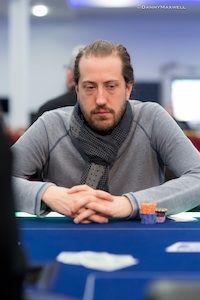
Let��s sit you down in a heads-up, winner-take-all match versus Steve O��Dwyer, the top-ranked player in the Global Poker Index for the past 10 weeks. Sure, you��re a good player, but we��ll make O��Dwyer the favorite here. Would you rather play with 5-minute levels, 15-minute levels, or 30-minute levels?
When your opponent has a decided skill advantage, you��re better off choosing a structure that lessens your opponent��s edge. Shorter levels means fewer hands per level. It also means the relative depth of the stacks will get shallower more quickly, which will at some point �� perhaps sooner than later �� translate into less postflop play and more preflop all-ins. In such a match, O��Dwyer��s skill edge will be decreased and the luck component increased, giving you a better chance of winning.
Several years ago Arnold Snyder did a good job explaining the significance of tournament structures in his two-book series The Poker Tournament Formula. In those books he sorted through in detail the different structures �� fast, medium, and slow �� coming up with a ��patience factor�� for each that he suggested could be considered when choosing tournaments that best fit your particular skill level.
I��ll forgo rehearsing the entire discussion, but you can guess his advice to amateurs was to avoid the super-deep, super-slow structures where highly-skilled players were likely to dominate, instead favoring the faster ones in which the ��patience factor�� was minimal. Players choosing events to play at this summer��s WSOP would do well to take a look at structures, too, and decide which ones might best suit both their style and skill level.
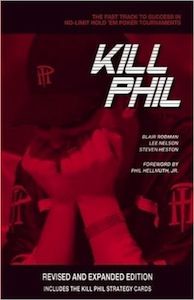
About a decade ago authors Blair Rodman, Lee Nelson, and Steven Heston used a similar idea to build a more involved strategy for playing against better-skilled players, presenting their ideas in a book called Kill Phil: The Fast Track to Success in No-Limit Hold��em Tournaments. The title of the book was a humorous reference to the many poker pros named Phil �� like Phil Hellmuth and Phil Ivey �� and how the book was designed to teach readers how to play against obviously better opponents.
The strategy involved playing an aggressive game that would necessarily decrease such opponents�� skill edge, with lots of preflop aggression and a more liberal use of the all-in move to force better players to gamble more (or, even better, to fold more). In a way, the ��big pot�� style could be said to make a tournament play ��faster�� no matter its structure. (Obviously this is a very general summary of the book��s ideas, which were later built upon in a sequel titled Kill Everyone.)
To answer the question about more possessions per game, then, it��s a little like having more hands per level in a poker tournament. ��The conventional wisdom is that this is bad news for underdogs,�� explains Matt Giles this week for FiveThirtyEight, who notes ��that weaker teams are best served by slowing down the game and pumping up the variance.�� Giles then highlights a few lower-seeded teams in this year��s tournament who in fact prefer a fast-paced game and will be challenging such ��conventional wisdom.��
Slowing down a basketball game means fewer possessions, which can mean fewer opportunities for a better-skilled team to excel. Similarly might a faster poker tournament structure and/or a well-managed use of aggression help ��pump up the variance�� and give a lesser-skilled player a better chance of winning versus better players.
In any event, I think all of us who have filled out NCAA brackets are essentially underdogs. Some of you might know what you��re doing, but for even the best-skilled prognosticators among us to feel confident about their brackets is, well, a form of March Madness.
Good luck! (And I mean it.)
Want to stay atop all the latest in the poker world? If so, make sure to get PokerNews updates on your social media outlets. Follow us on Twitter and find us on both Facebook and Google+!

